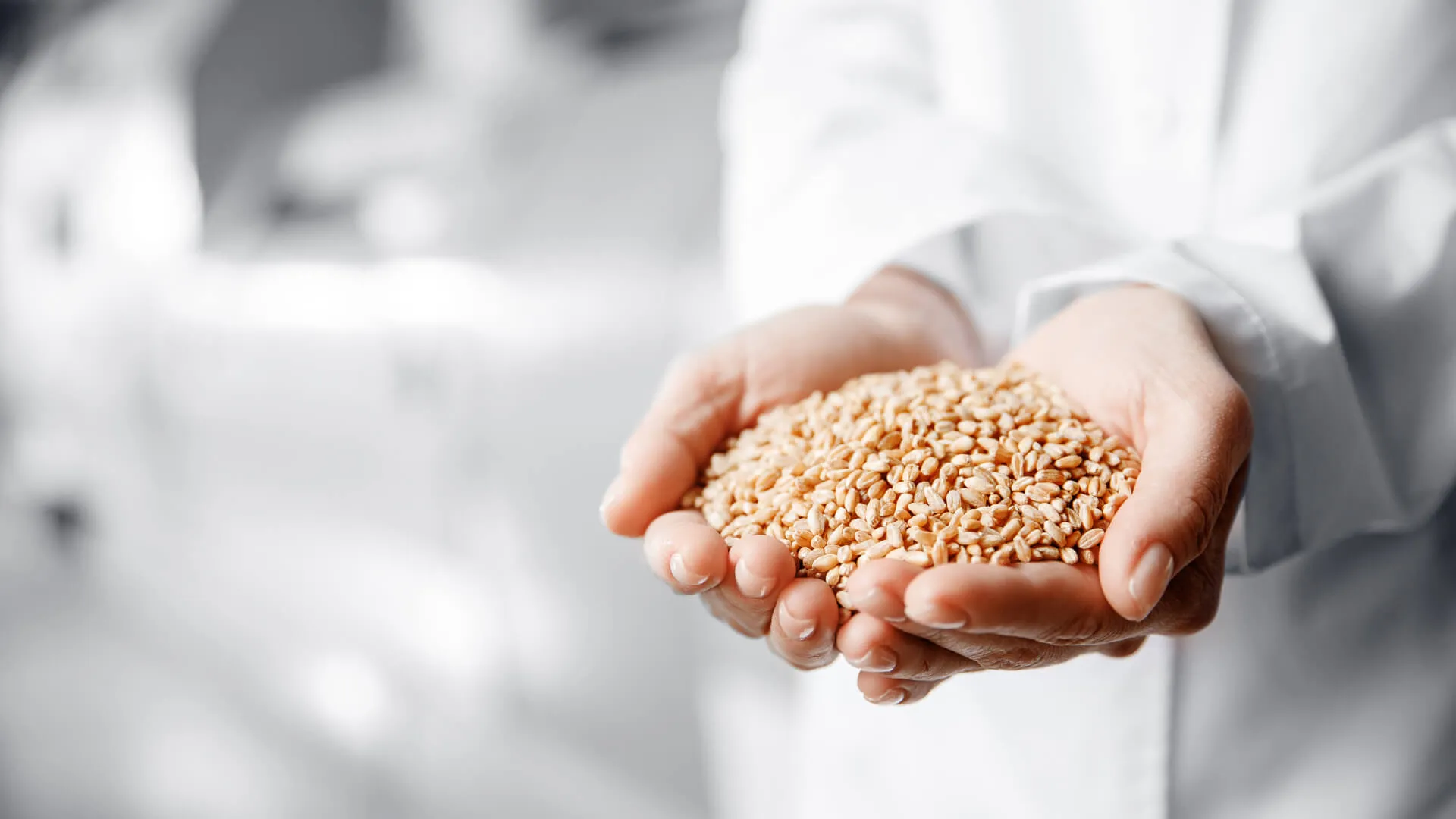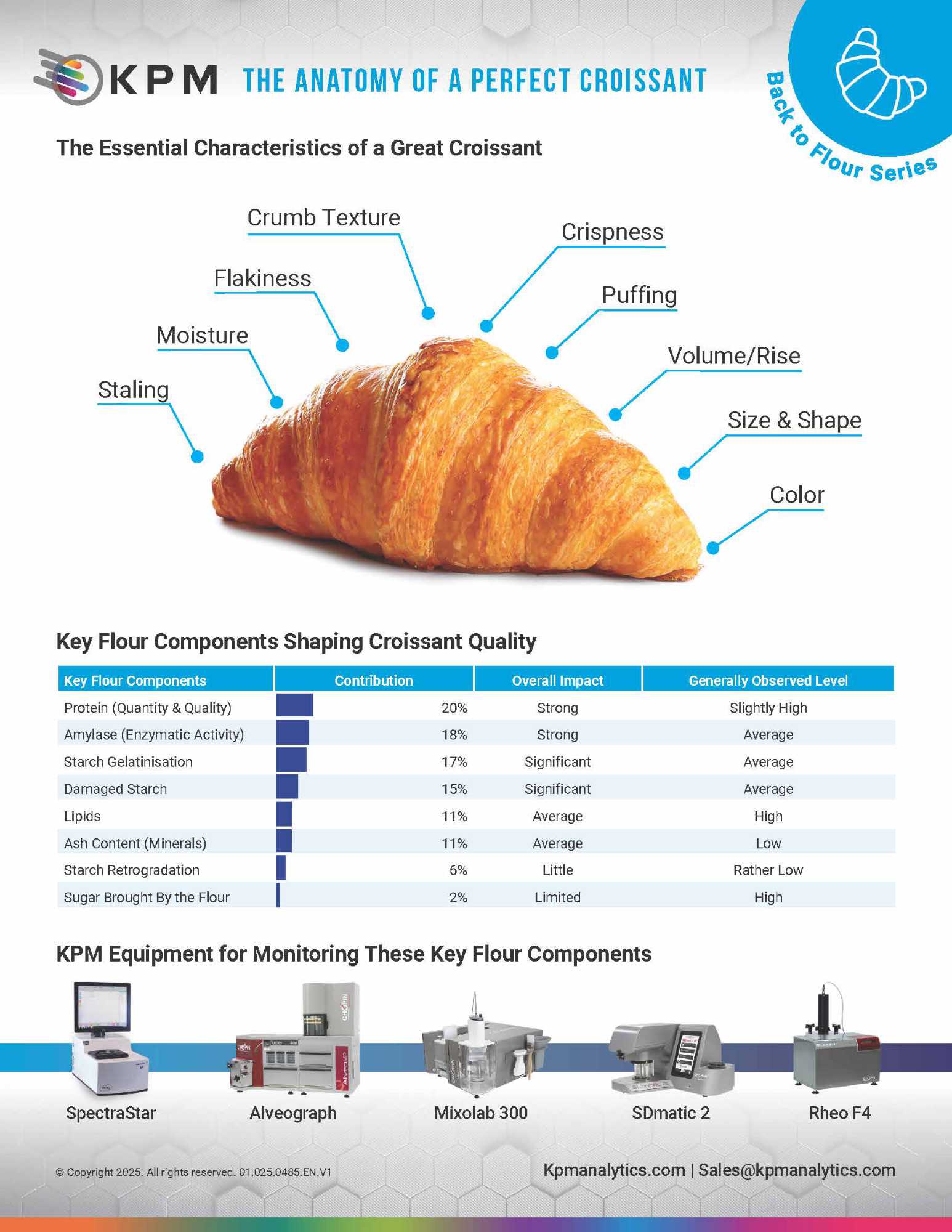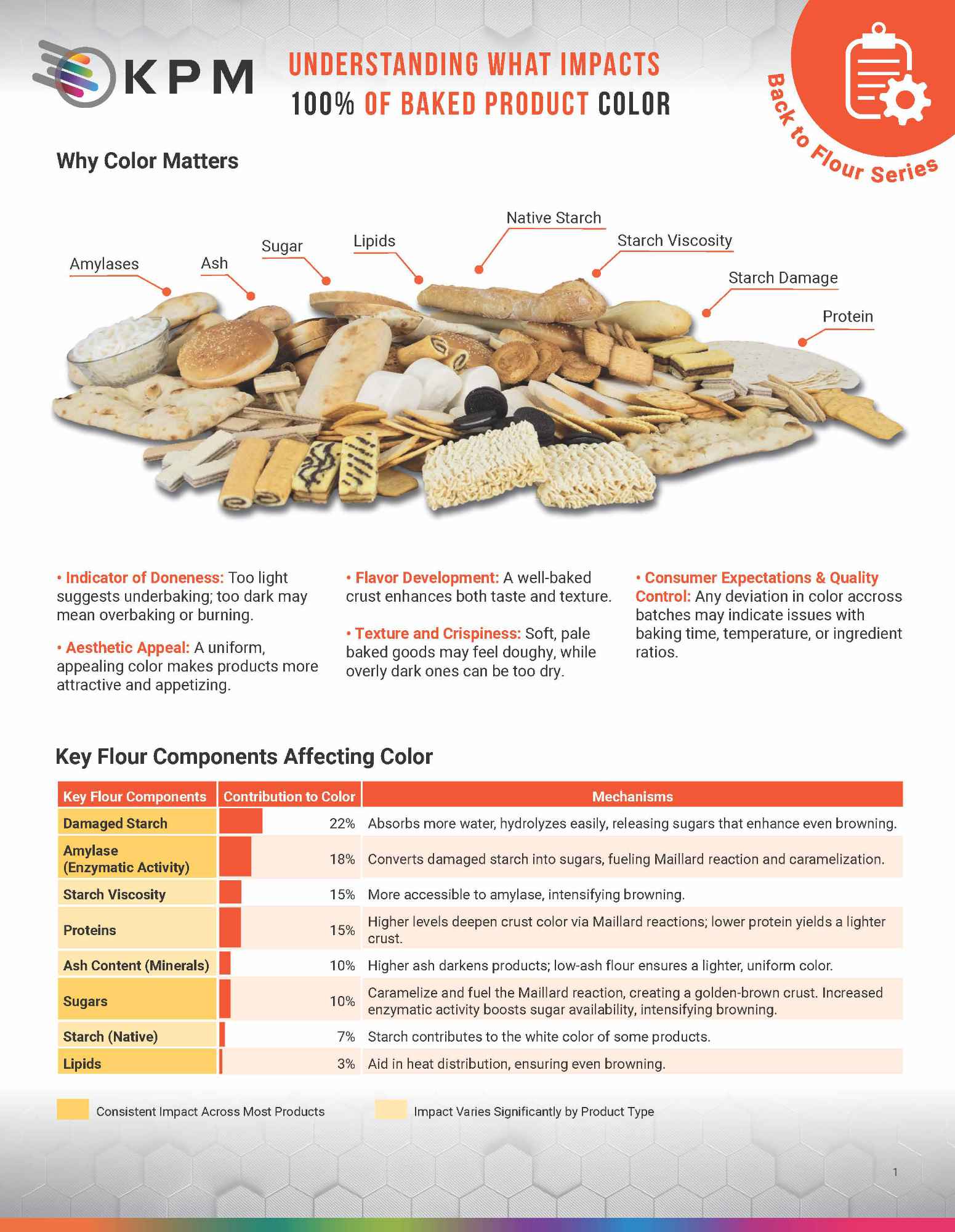Back to Flour What Impacts 62% of Baked Product Crumb Texture

Crumb texture defines how a baked product feels to eat and plays a major role in freshness, quality, and consumer appeal. A soft, tender crumb is associated with pleasant mouthfeel and freshness, while a dense or dry one can make products less enjoyable. The ideal texture depends on the final product itself: sandwich bread requires a fine, flexible crumb, while firmer or more open structures suit artisan breads or toastable products.
This document presents the flour components that shape crumb texture. Proteins determine the structure and strength of the crumb network. Starch viscosity supports softness and moisture retention, while enzymatic activity and damaged starch influence gas production and crumb openness. Lipids improve elasticity and cohesion, ash content affects uniformity, and starch retrogradation governs firmness and staling over time.
By linking these flour mechanisms to texture and structure, this resource helps bakers and millers understand how to achieve the desired crumb quality for each type of baked product.
This document is part of the Back to Flour Series, an educational program that connects flour science to bakery product characteristics



